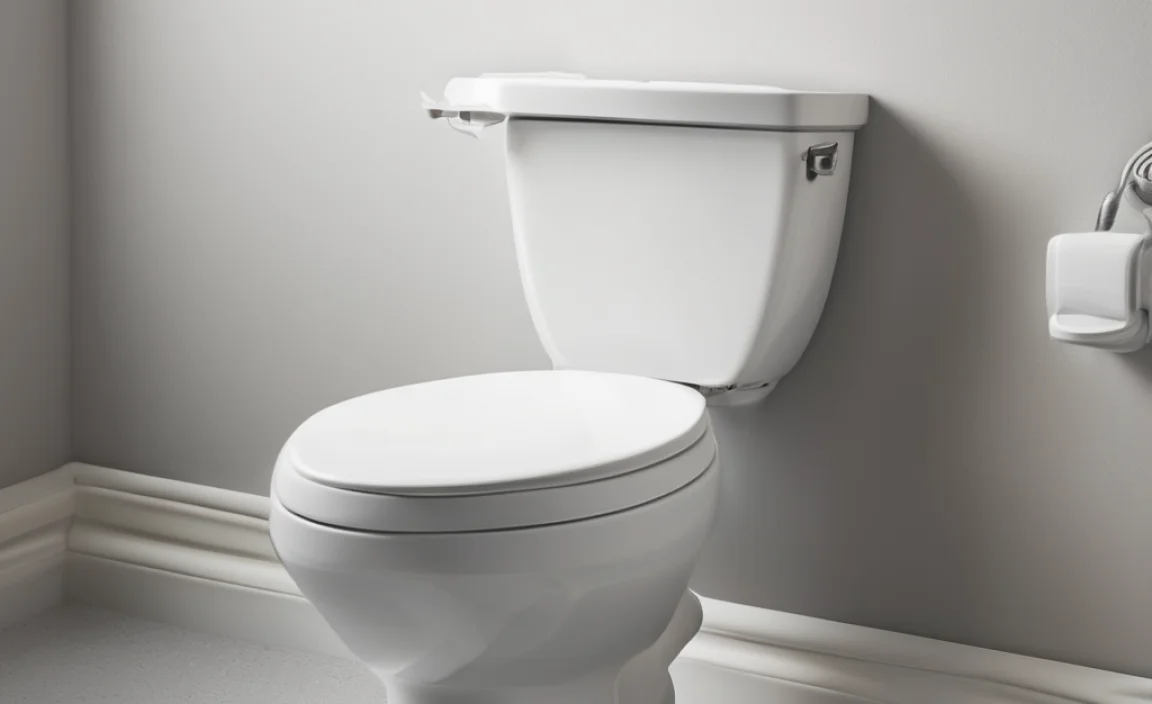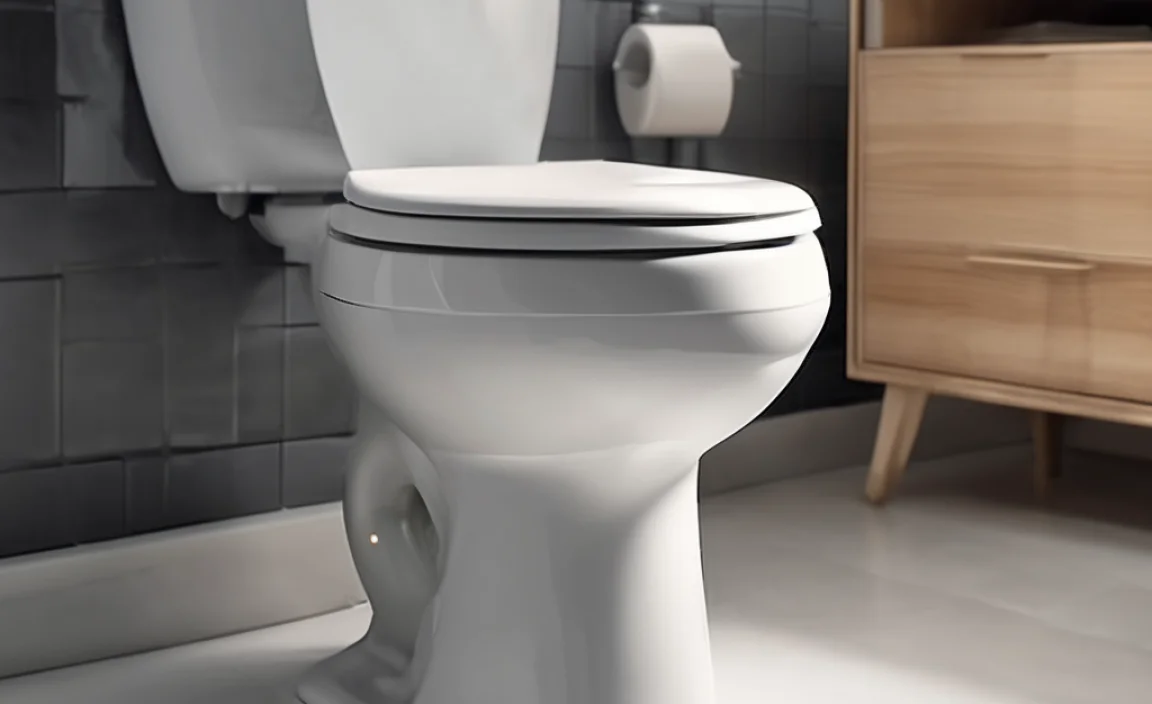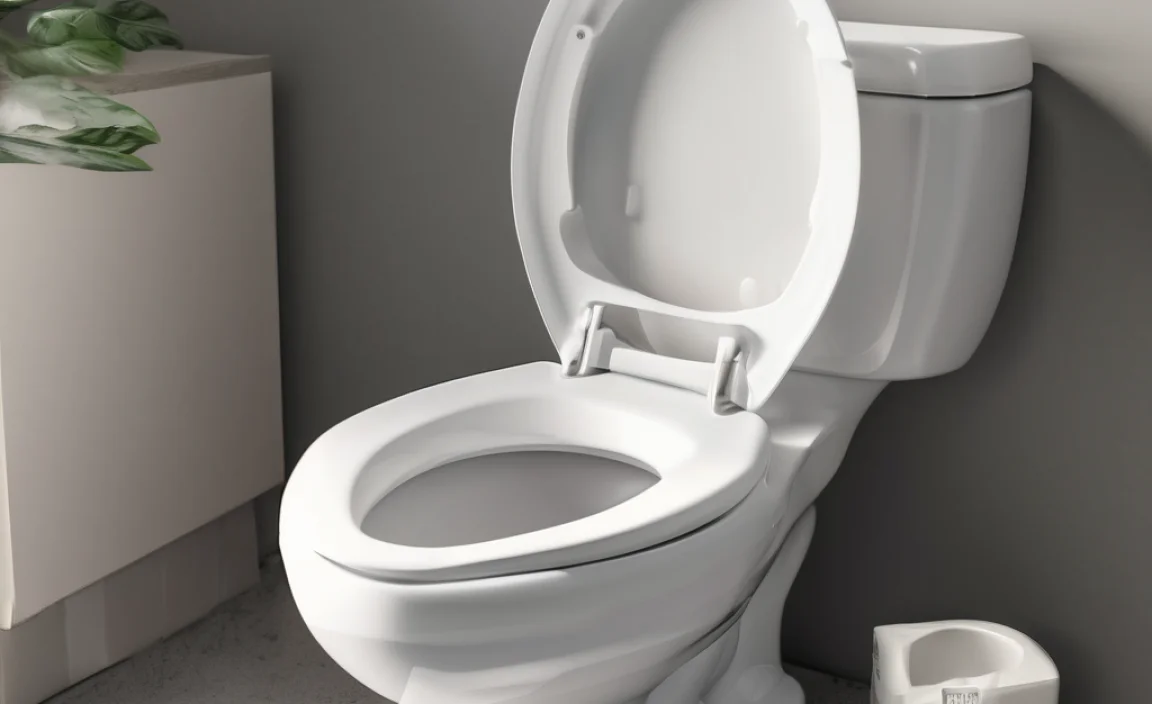**Quick Summary:**
**Removing super glue from a toilet seat can be simple! Soften the glue with warm, soapy water or acetone-based nail polish remover. Gently scrape it off with a plastic scraper or credit card, being careful not to scratch the surface. Clean the area with a mild cleaner to remove any residue. You’ll have a super-clean toilet seat in no time!**
Accidents happen, and sometimes super glue ends up where it shouldn’t. Finding a blob of super glue stuck to your toilet seat can be frustrating. But don’t worry, you don’t need to replace the whole thing! With a few common household items and a little patience, you can remove that stubborn glue and restore your toilet seat to its former glory.
This guide provides easy-to-follow steps to safely remove super glue from your toilet seat. We’ll cover everything from softening the glue to the final cleanup, ensuring you won’t damage the surface. Ready to say goodbye to that sticky mess? Let’s get started!
What You’ll Need

Before we start, gather these simple supplies. Having everything on hand will make the process smooth and efficient.
- Warm, soapy water
- Soft cloths or sponges
- Acetone-based nail polish remover (optional, test in an inconspicuous area first)
- Plastic scraper or old credit card
- Mild household cleaner
- Soft towel
- Gloves (optional, to protect your skin)
Step-by-Step Guide to Removing Super Glue

Follow these steps carefully to remove super glue from your toilet seat without causing any damage.
Step 1: Soften the Super Glue
The first step is to soften the super glue. This will make it easier to remove without scratching or damaging the toilet seat.
- Prepare Warm, Soapy Water: Fill a bowl with warm water and add a few drops of mild dish soap. Mix well.
- Apply to the Glue: Soak a soft cloth or sponge in the soapy water.
- Dampen the Glue: Place the damp cloth over the super glue and let it sit for 10-15 minutes. This will help to soften the adhesive. Re-wet the cloth as needed to keep the area moist.
Step 2: Gently Scrape Off the Glue
After softening the glue, it’s time to gently scrape it away.
- Use a Plastic Scraper: Take a plastic scraper or an old credit card. These are less likely to scratch the toilet seat than metal tools.
- Scrape Gently: Carefully slide the edge of the scraper under the softened glue. Apply gentle pressure to lift the glue away from the surface. Work slowly and avoid using excessive force.
- Repeat as Needed: If the glue is stubborn, repeat the softening process with warm, soapy water and continue scraping until most of the glue is removed.
Step 3: Use Acetone (Optional)
If soapy water isn’t enough, acetone-based nail polish remover can help dissolve the remaining glue. However, test it in an inconspicuous area first to ensure it doesn’t damage the toilet seat finish.
- Test First: Apply a small amount of acetone to a hidden part of the toilet seat (like under the seat) and wait a few minutes. Check for any discoloration or damage.
- Apply Acetone: If the test is successful, soak a cotton ball or cloth with acetone.
- Dab the Glue: Gently dab the acetone onto the remaining super glue. Let it sit for 2-3 minutes to loosen the adhesive.
- Scrape Again: Use the plastic scraper to carefully remove the softened glue.
- Wipe Clean: Wipe the area with a clean, damp cloth to remove any acetone residue.
Step 4: Clean the Area
Once the glue is removed, clean the area to remove any remaining residue and restore the shine of your toilet seat.
- Apply Mild Cleaner: Spray a mild household cleaner onto a soft cloth.
- Wipe the Surface: Gently wipe the entire area to remove any leftover glue residue or cleaning agents.
- Dry Thoroughly: Use a clean, dry towel to dry the toilet seat completely.
Alternative Methods for Removing Super Glue

Here are a few alternative methods you can try if the above steps don’t fully remove the super glue.
Using Cooking Oil
Cooking oils can help loosen the bond of super glue.
- Apply Oil: Apply a small amount of cooking oil (such as olive oil or vegetable oil) to the super glue.
- Let It Sit: Let the oil sit for about 30 minutes to penetrate the glue.
- Wipe and Scrape: Wipe away the oil and gently scrape off the softened glue.
- Clean: Clean the area with soap and water to remove any oily residue.
Using Baking Soda Paste
Baking soda can act as a mild abrasive to help remove the glue.
- Make a Paste: Mix baking soda with water to form a thick paste.
- Apply the Paste: Apply the paste to the super glue.
- Scrub Gently: Gently scrub the area with a soft cloth or sponge.
- Rinse: Rinse the area with water and dry thoroughly.
Tips and Tricks for Tough Stains

Sometimes, super glue leaves behind stubborn stains. Here are some tips to tackle them.
- Patience is Key: Don’t rush the process. Softening the glue thoroughly is crucial to avoid damage.
- Multiple Applications: For thick layers of glue, repeat the softening and scraping steps multiple times.
- Avoid Abrasives: Never use abrasive cleaners or scrub brushes, as they can scratch the toilet seat.
- Test Solutions: Always test any cleaning solution in an inconspicuous area first.
Common Mistakes to Avoid

To ensure a smooth and safe removal process, avoid these common mistakes:
- Using Metal Tools: Metal scrapers or knives can easily scratch the toilet seat. Stick to plastic tools.
- Applying Too Much Force: Forcing the glue off can damage the surface. Be gentle and patient.
- Ignoring Safety Precautions: Always wear gloves and work in a well-ventilated area, especially when using acetone.
- Using Harsh Chemicals: Avoid using harsh chemicals like bleach or strong solvents, as they can discolor or damage the toilet seat.
Choosing the Right Tools and Materials
Selecting the right tools and materials is essential for a successful super glue removal. Here’s a detailed guide:
| Tool/Material | Description | Why It’s Important |
|---|---|---|
| Warm, Soapy Water | A mixture of warm water and mild dish soap. | Softens the glue and makes it easier to remove. |
| Soft Cloths/Sponges | Non-abrasive cloths or sponges. | Used to apply soapy water and wipe away residue without scratching. |
| Acetone-Based Nail Polish Remover | A solvent that dissolves super glue (test first). | Breaks down the glue’s adhesive properties. |
| Plastic Scraper/Old Credit Card | A plastic tool with a flat edge. | Lifts the softened glue without damaging the toilet seat. |
| Mild Household Cleaner | A gentle cleaning solution. | Removes any remaining residue and restores the toilet seat’s shine. |
| Soft Towel | A clean, dry towel. | Dries the toilet seat thoroughly after cleaning. |
| Gloves | Protective gloves (optional). | Protects skin from chemicals and glue. |
Safety Precautions
Safety should always be a priority when working with cleaning agents and adhesives.
- Ventilation: Work in a well-ventilated area to avoid inhaling fumes, especially when using acetone.
- Skin Protection: Wear gloves to protect your skin from irritation or chemical burns.
- Eye Protection: Wear safety glasses or goggles to prevent splashes from entering your eyes.
- Child and Pet Safety: Keep cleaning solutions and tools out of reach of children and pets.
- Disposal: Dispose of used cloths and cotton balls properly to avoid accidental contact.
Maintaining Your Toilet Seat
After successfully removing the super glue, proper maintenance will keep your toilet seat looking its best.
- Regular Cleaning: Clean your toilet seat regularly with a mild cleaner and a soft cloth.
- Avoid Harsh Chemicals: Avoid using abrasive cleaners or bleach, as they can damage the surface.
- Gentle Wiping: Wipe up spills immediately to prevent stains and buildup.
- Check Hardware: Periodically check and tighten the screws and bolts that hold the toilet seat in place.
When to Consider Professional Help
While most super glue removal tasks can be handled at home, there are situations where professional help may be necessary.
- Extensive Damage: If the super glue has caused significant damage to the toilet seat, such as deep scratches or discoloration, a professional may be able to repair or replace it.
- Difficult Stains: If you’ve tried multiple methods and are still unable to remove stubborn stains, a professional cleaning service may have specialized tools and solutions.
- Expensive or Delicate Materials: If your toilet seat is made of an expensive or delicate material, such as wood or a special finish, it’s best to consult a professional to avoid further damage.
Cost-Effective Solutions
Removing super glue from a toilet seat doesn’t have to break the bank. Here are some cost-effective solutions using items you likely already have at home:
- DIY Cleaning Solutions: Instead of buying expensive cleaners, use homemade solutions like warm, soapy water or baking soda paste.
- Repurpose Old Items: Use an old credit card or plastic scraper instead of buying a new tool.
- Check Dollar Stores: Dollar stores often carry affordable cleaning supplies, such as cloths, sponges, and mild cleaners.
Environmental Considerations
When tackling DIY projects, it’s important to consider the environmental impact of your cleaning solutions and disposal methods.
- Eco-Friendly Cleaners: Opt for environmentally friendly cleaning products that are biodegradable and non-toxic.
- Proper Disposal: Dispose of used cloths, cotton balls, and containers properly. Avoid flushing them down the toilet.
- Reduce Waste: Use reusable cloths and sponges instead of disposable wipes.
FAQ Section
Here are some frequently asked questions about removing super glue from a toilet seat.
1. Can I use a hair dryer to heat the glue?
Yes, you can use a hair dryer on a low setting to gently heat the glue and soften it. Be careful not to overheat the plastic, as this could cause damage. Keep the hair dryer moving and test the glue’s softness periodically.
2. Will acetone damage my toilet seat?
Acetone can potentially damage some toilet seat finishes. Always test it in an inconspicuous area first. If it causes discoloration or damage, avoid using it.
3. How long should I let the soapy water sit on the glue?
Let the soapy water sit on the glue for 10-15 minutes. Re-wet the cloth as needed to keep the area moist. This helps to soften the adhesive effectively.
4. Can I use vinegar to remove super glue?
Vinegar is a mild acid and may help to soften super glue. Soak a cloth in vinegar and apply it to the glue for about 30 minutes before attempting to scrape it off.
5. What if the super glue has dried for a long time?
If the super glue has been dried for a while, it may be more difficult to remove. Repeat the softening and scraping steps multiple times, and consider using acetone if soapy water isn’t effective.
6. Is it safe to use a razor blade to scrape off the glue?
Using a razor blade is risky because it can easily scratch the toilet seat. It’s best to stick to plastic scrapers or old credit cards to avoid damage.
7. How can I prevent super glue from getting on the toilet seat in the future?
Be careful when using super glue near the toilet. Cover the toilet seat with a cloth or plastic sheet to protect it from accidental spills.
Conclusion
Removing super glue from your toilet seat doesn’t have to be a stressful task. By following these simple steps and using the right tools and materials, you can safely and effectively restore your toilet seat to its original condition. Remember to be patient, avoid harsh chemicals, and always test solutions in an inconspicuous area first. With a little elbow grease and the right approach, you’ll have your bathroom back to normal in no time!


